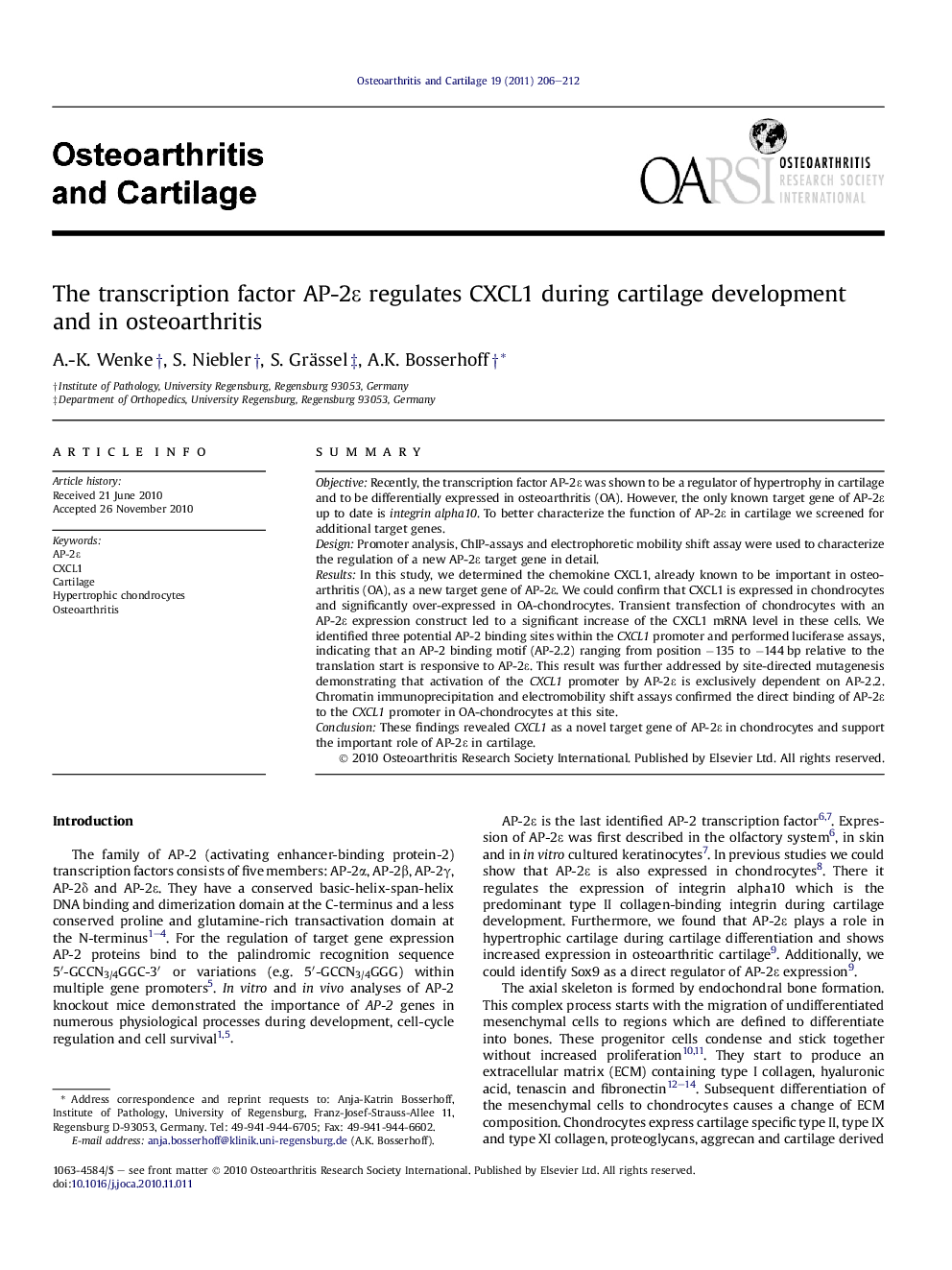| Article ID | Journal | Published Year | Pages | File Type |
|---|---|---|---|---|
| 3380237 | Osteoarthritis and Cartilage | 2011 | 7 Pages |
SummaryObjectiveRecently, the transcription factor AP-2ɛ was shown to be a regulator of hypertrophy in cartilage and to be differentially expressed in osteoarthritis (OA). However, the only known target gene of AP-2ɛ up to date is integrin alpha10. To better characterize the function of AP-2ɛ in cartilage we screened for additional target genes.DesignPromoter analysis, ChIP-assays and electrophoretic mobility shift assay were used to characterize the regulation of a new AP-2ɛ target gene in detail.ResultsIn this study, we determined the chemokine CXCL1, already known to be important in osteoarthritis (OA), as a new target gene of AP-2ɛ. We could confirm that CXCL1 is expressed in chondrocytes and significantly over-expressed in OA-chondrocytes. Transient transfection of chondrocytes with an AP-2ɛ expression construct led to a significant increase of the CXCL1 mRNA level in these cells. We identified three potential AP-2 binding sites within the CXCL1 promoter and performed luciferase assays, indicating that an AP-2 binding motif (AP-2.2) ranging from position −135 to −144 bp relative to the translation start is responsive to AP-2ɛ. This result was further addressed by site-directed mutagenesis demonstrating that activation of the CXCL1 promoter by AP-2ɛ is exclusively dependent on AP-2.2. Chromatin immunoprecipitation and electromobility shift assays confirmed the direct binding of AP-2ɛ to the CXCL1 promoter in OA-chondrocytes at this site.ConclusionThese findings revealed CXCL1 as a novel target gene of AP-2ɛ in chondrocytes and support the important role of AP-2ɛ in cartilage.
